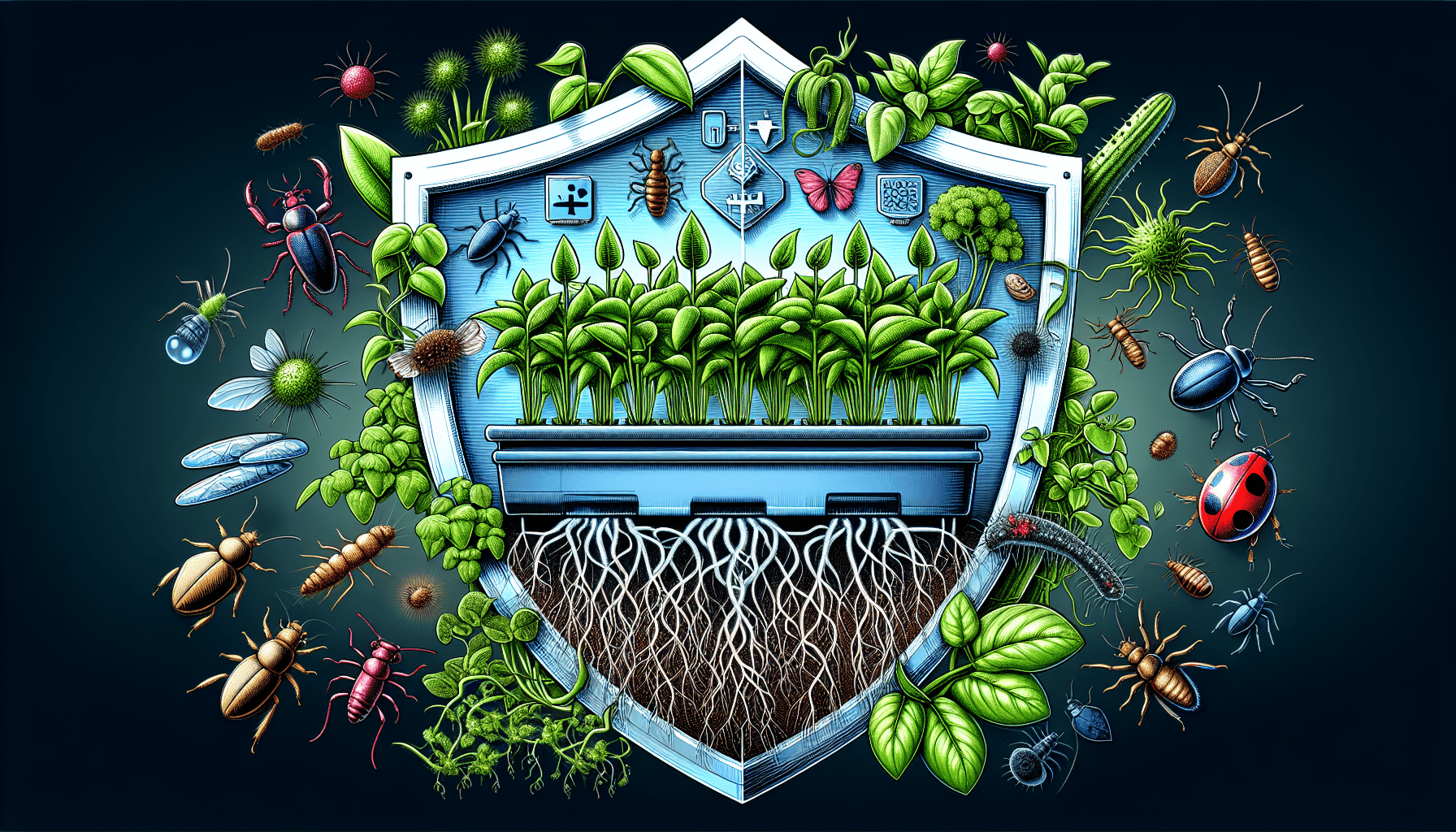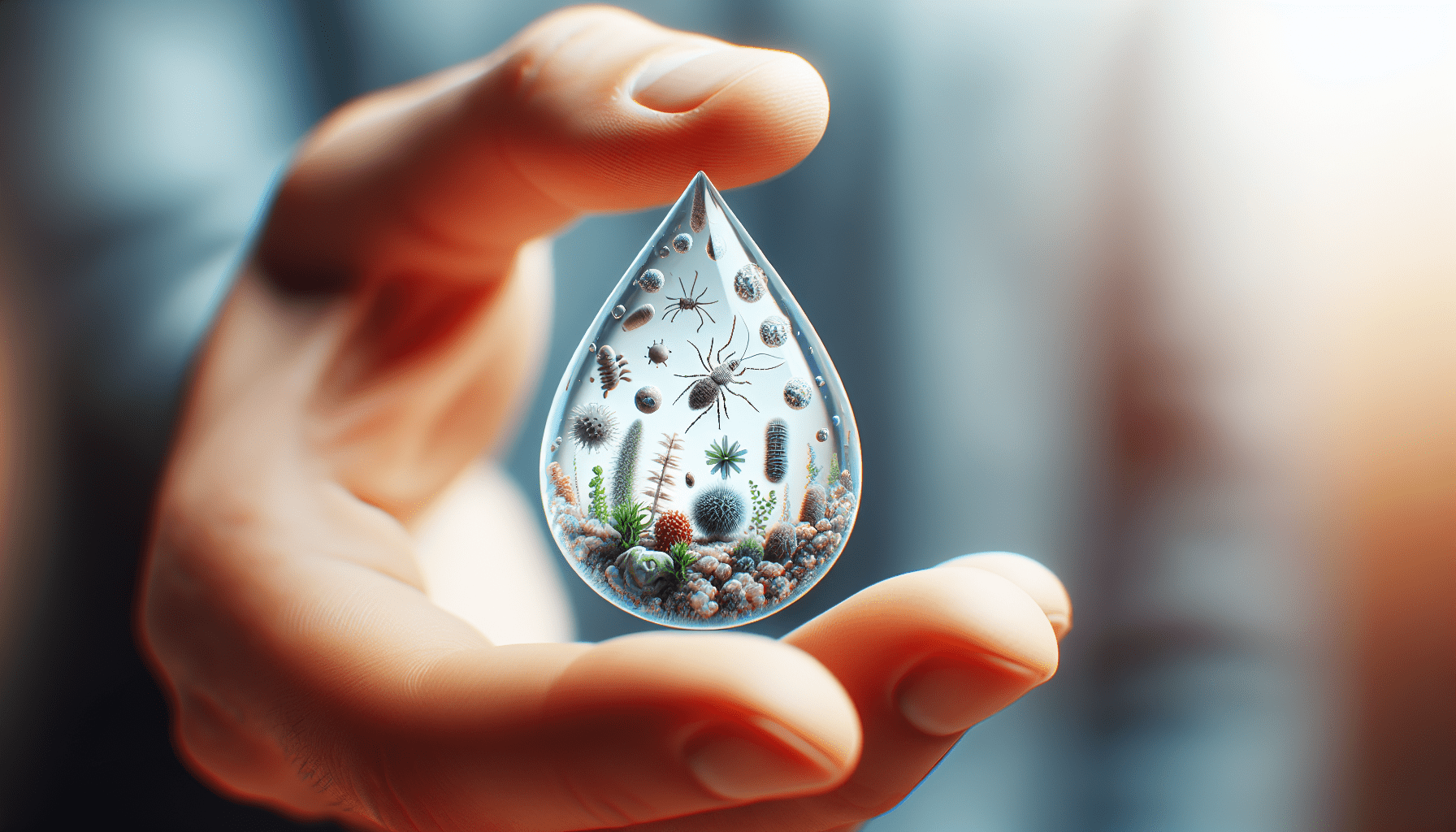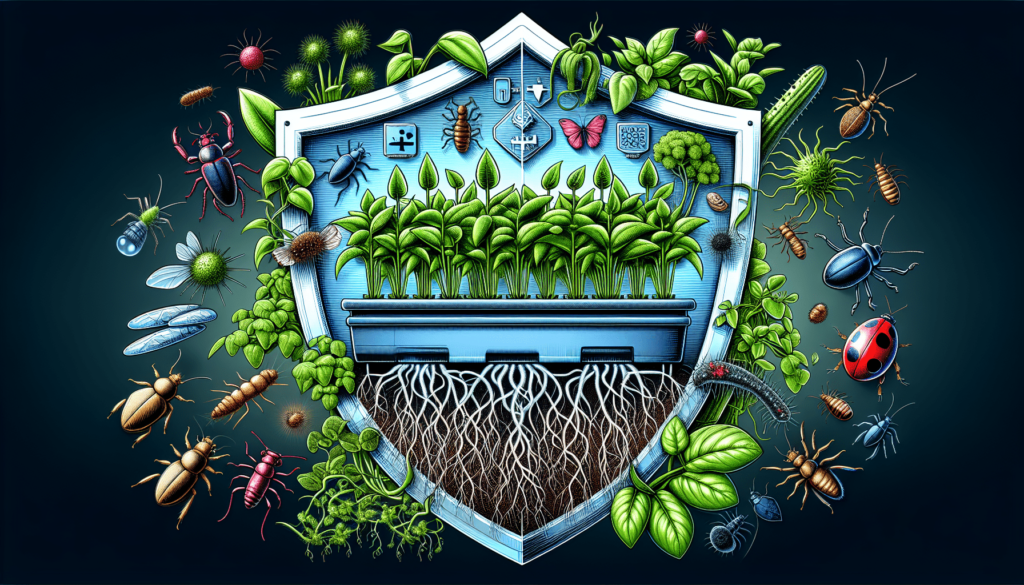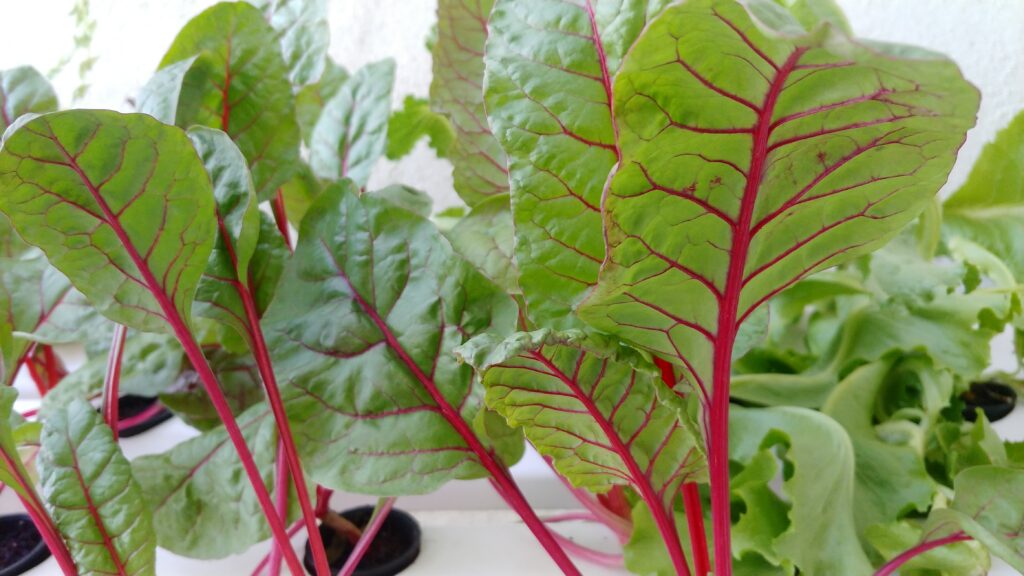In maintaining a hydroponic system, it is crucial to be aware of the common pests and diseases that could pose a threat. These unwelcome visitors can wreak havoc on your plants and potentially disrupt the entire system. By understanding the signs and symptoms, such as yellowing leaves or wilting, you can take proactive measures to prevent and manage these issues effectively. From aphids and spider mites to root rot and powdery mildew, staying vigilant will ensure the health and productivity of your hydroponic garden.
Common Pests in Hydroponic Systems
Aphids
Aphids are a common pest in hydroponic systems. These small, soft-bodied insects can quickly reproduce and infest your plants. They feed on the sap of plants, causing yellowing of leaves and stunted growth. To control aphids, you can introduce natural predators like ladybugs or use insecticidal soaps or oils.
Spider Mites
Spider mites are another pest that can infest your hydroponic system. These tiny pests are difficult to see with the naked eye but can cause significant damage to your plants. They feed on the sap of plants, leaving behind small yellow spots and webbing. To control spider mites, regularly inspect your plants, increase humidity levels, and use natural predators like predatory mites.
Whiteflies
Whiteflies are small flying insects that can quickly multiply and infest your hydroponic system. They feed on the sap of plants and produce sticky honeydew, which can attract other pests and promote the growth of sooty mold. To control whiteflies, use yellow sticky traps, introduce natural predators like parasitic wasps, and use insecticidal soaps.
Thrips
Thrips are tiny, slender insects that can cause significant damage to your hydroponic plants. They feed on plant tissue, causing leaves to become discolored and distorted. Thrips can also transmit viruses, making them a serious threat to your crops. To control thrips, regularly monitor your plants for signs of infestation, use yellow or blue sticky traps, and introduce natural predators like predatory mites or beneficial nematodes.
Mealybugs
Mealybugs are small, white, cottony pests that can infest your hydroponic system. They feed on the sap of plants, causing yellowing of leaves and stunted growth. Mealybugs can also produce honeydew, attracting ants and promoting the growth of sooty mold. To control mealybugs, manually remove them with a cotton swab dipped in rubbing alcohol, introduce predators like ladybugs or lacewings, and use insecticidal soaps or oils.
Fungus Gnats
Fungus gnats are small flying insects that are a common nuisance in hydroponic systems. They are attracted to damp environments and can quickly multiply if not controlled. Fungus gnats lay their eggs in the growing medium, and their larvae feed on the roots of the plants, causing stunted growth. To control fungus gnats, allow the growing medium to dry out between waterings, use yellow sticky traps, and introduce beneficial nematodes to feed on the larvae.
Scale Insects
Scale insects are small, oval-shaped pests that attach themselves to the stems and leaves of plants in your hydroponic system. They feed on plant sap, causing yellowing of leaves and weakened growth. Scale insects can also secrete honeydew, attracting ants and promoting the growth of sooty mold. To control scale insects, manually remove them with a cotton swab dipped in rubbing alcohol, prune heavily infested areas, and use insecticidal soaps or oils.
Root-knot Nematodes
Root-knot nematodes are microscopic roundworms that can infest the roots of your hydroponic plants. They cause swelling and galls on the roots, leading to reduced nutrient uptake and stunted growth. To control root-knot nematodes, practice crop rotation, sterilize your hydroponic system between crops, and use nematode-resistant plant varieties.
Leaf Miners
Leaf miners are small insect larvae that tunnel through the leaves of your hydroponic plants, leaving behind distinctive trails or mines. They feed on the leaf tissue, causing leaves to become discolored and distorted. To control leaf miners, regularly inspect your plants for signs of infestation, remove and destroy infested leaves, and introduce natural predators like parasitic wasps.
Caterpillars
Caterpillars are the larval stage of butterflies and moths and can be a major pest in hydroponic systems. They feed on the leaves of plants, causing extensive damage and defoliation. To control caterpillars, manually remove and destroy them, use insecticidal sprays or baits, and introduce natural predators like birds or beneficial nematodes.

Common Diseases in Hydroponic Systems
Pythium Root Rot
Pythium root rot is a common fungal disease that affects the roots of hydroponic plants. It thrives in moist conditions and can cause roots to become brown and mushy, leading to stunted growth and wilting. To prevent pythium root rot, ensure proper drainage in your hydroponic system, sterilize your growing medium, and avoid overwatering.
Fusarium Wilt
Fusarium wilt is a soil-borne fungal disease that can infect hydroponic plants through their roots. It causes wilting, yellowing of leaves, and stunted growth. Fusarium wilt can spread rapidly and result in the death of the entire plant. To prevent fusarium wilt, ensure proper sanitation practices, use disease-resistant plant varieties, and maintain optimal nutrient levels to promote plant health.
Powdery Mildew
Powdery mildew is a common fungal disease that affects the leaves and stems of hydroponic plants. It appears as a white, powdery growth on the surface of the plant, causing leaves to become distorted and yellow. Powdery mildew can spread rapidly and affect multiple plants if not controlled. To prevent powdery mildew, maintain adequate air circulation in your hydroponic system, reduce humidity levels, and use fungicidal sprays or sulfur-based treatments.
Botrytis (Gray Mold)
Botrytis, also known as gray mold, is a fungal disease that affects many types of plants, including those in hydroponic systems. It thrives in humid conditions and can cause gray, fuzzy growth on leaves, stems, and flowers. Botrytis can spread rapidly and cause significant damage to your plants. To prevent botrytis, maintain proper air circulation, reduce humidity levels, and remove and destroy infected plant material.
Damping-Off
Damping-off is a fungal disease that affects seeds and seedlings in hydroponic systems. It causes the rotting of seeds or seedlings at or just below the soil surface, leading to poor germination and plant death. Damping-off can be prevented by using clean and sterile equipment, providing proper ventilation, and avoiding overwatering.
Bacterial Infections
Bacterial infections can occur in hydroponic systems and can affect various parts of the plants, including roots, stems, and leaves. Symptoms of bacterial infections can include wilting, yellowing of leaves, and the development of rot or lesions. To prevent bacterial infections, practice proper sanitation and hygiene, use disease-resistant plant varieties, and maintain optimal nutrient levels to promote plant vigor.
Viral Infections
Viral infections can be a significant threat to hydroponic plants as they can cause a wide range of symptoms, including mosaic patterns on leaves, stunted growth, and distorted fruit. Viruses can be transmitted through mechanical means, such as handling infected plants or using contaminated tools. To prevent viral infections, practice strict hygiene, regularly monitor plants for signs of infection, and promptly remove and destroy infected plants.
Phytophthora Blight
Phytophthora blight is a destructive fungal disease that affects the roots and stems of hydroponic plants. It causes rotting of the plant tissue, wilting, and eventual death of the plant. Phytophthora blight thrives in wet conditions and can spread rapidly. To prevent phytophthora blight, ensure proper drainage in your hydroponic system, practice crop rotation, and use disease-resistant plant varieties.
Alternaria Leaf Spot
Alternaria leaf spot is a fungal disease that affects the leaves of hydroponic plants. It appears as dark, concentric circles or spots on the leaves, causing them to become yellow and eventually die. Alternaria leaf spot can spread rapidly and affect multiple plants. To prevent alternaria leaf spot, maintain proper air circulation, avoid overhead watering, and remove and destroy infected plant material.
Downy Mildew
Downy mildew is a fungal disease that affects many types of plants, including those in hydroponic systems. It appears as yellow or white patches on the undersides of leaves, causing them to become yellow and curl. Downy mildew can spread rapidly, especially in humid conditions. To prevent downy mildew, maintain proper air circulation, reduce humidity levels, and remove and destroy infected plant material.
In conclusion, being aware of the common pests and diseases that can affect your hydroponic system is essential for successful cultivation. Regular monitoring, proper sanitation, and the use of preventive measures such as introducing natural predators or utilizing appropriate treatments can help you keep your hydroponic plants healthy and thriving. By staying vigilant and taking proactive steps, you can minimize the risk of pests and diseases and maximize your hydroponic gardening experience.



